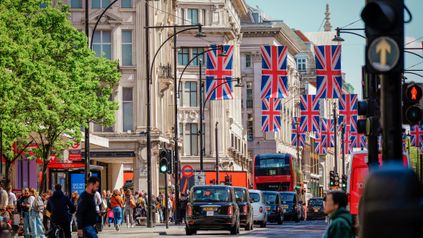The retail industry continues to experience a digital transformation through the use of Artificial Intelligence (AI). This use in both retail and e-commerce has meant consumers have high expectations for personalised and instant experiences through AI technologies, and this use is fast becoming a staple in streamlining the consumer experience.
Long gone are the days where you would begrudgingly drive to the nearest open store on a dark and damp December evening because you remembered you needed batteries, or the birthday gift you have been meaning to buy for weeks. With services like Amazon (whose stock soared 76% in 2020, no doubt fuelled by the pandemic), you can buy those exact same items and many more within a second just by a click of a button, delivery to your door within a decent time frame. Not only that, but you are prompted at checkout with other items you may need or may want to buy again, all from the comfort of your living room.
This now digital-norm way of buying products has been propelled by advancing technologies, including the use of AI to facilitate this experience. But this doesn’t mean it is the end for bricks-and-mortar businesses; for example, many consumers may visit a physical retailer to view a product, and then make the purchase online. Further, brands now make use of games, pop-up shops, and live streams, known as ‘retailtainment’ to push customer engagement in new ways, bringing to life AI within the physical retail space. It’s clear that retail and e-commerce need to co-exist and work together to provide the best shopping experience for consumers.
Five Ways Retailers Can Make the Most of Up-to-Date Technologies
1. Advanced Customer Service
AI chatbots and personal assistants are quickly becoming accepted, with over 60% of consumers having interacted with chatbots when online shopping. This enhanced service provides instant responses around the clock, can learn a customer’s shopping habits, has access to a customer’s full history with a branch, and deals with returns and cancellations. Machine learning technology can also analyse customer data over a period of time, developing an understanding of a customer’s preference, style and size, and previous purchases. Engaging with customers in this way allows for a more personalised response, with the technology then being able to suggest new products based on the customer’s taste and purchase history. Whilst the AI deals with tasks such as these, it allows the human retail workforce to tackle more complex issues.
2. Faster and More Streamlined Checkout Processes
AI-driven checkout solutions have meant a 30% reduction in wait times and increased transaction speed by 40%. By introducing processes such as cashier-less checkouts and contactless payments, customers are saving time and experiencing a more convenient way of shopping, streamlining and enhancing the consumer experience overall.
3. Virtual Reality (VR) Showrooms and Storefronts
Customers are now able to search thousands of products, tailored to their preferences, thanks to virtual showrooms created by VR. Virtual fitting rooms and mirrors allow customers to try on products before purchasing them, all from the comfort of their own home. Ralph Lauren offers a service where shoppers can virtually walk through the shop floors of their iconic city stores and browse their products, emphasising the convenience that new technology is bringing to the forefront of the consumer experience.
4. Personalised and Tailored Experiences
The use of VR technology and algorithms has allowed for more personalised experiences; a ‘hyperpersonalisation’ where customers can get tailored advice based on their personal features and preferences. L’Oreal, for example, has a Virtual Try-on feature which gives them a competitive advantage over other brands by using AI; customers can try on makeup live or upload a selfie to see how they would look with their chosen makeup or hair colour product, and easily purchase the recommended product afterwards. This not only streamlines the process of buying for customers but allows them to gain an understanding of the product through a personalised experience. Many websites also now have a ‘Complete the Look’ feature, where the technology considers body type, purchase history and style profile to recommend complementary products that customers may want to buy when browsing for other items. This is advantageous in boosting upsells by persuading customers to spend more and is also a useful prompt for consumers who obtain value out of being offered other items they may like.
5. Management and Pricing
Inventory management, forecasting processes, reducing stockouts, minimising excessive inventories and improving supply chain efficiency can all be controlled by algorithms powered by AI. Algorithms such as these are able to predict demand and adjust inventory levels by analysing historical sales data, market trends, and external factors such as economic indicators.
Retailers can also use AI for pricing optimisation; those that have reported up to a 10% increase in revenue and a 20% improvement in profit margins. Predictive analytics through AI enables retailers to strategise pricing and promotional campaigns based on their competitors, market dynamics and target audience. Algorithms also enable optimal price points to be recommended and anticipate consumer demand.
Looking Ahead
Developing a deep understanding of consumer behaviour, streamlining operations, and keeping ahead of the competition is clearly at the forefront of using AI in the retail space. Retailers should remain cautious, especially of important ethical considerations such as data privacy, biases present in algorithms, and the future of work which using this AI brings. Investing in programs and initiatives which train employees to use AI tools efficiently and effectively enables humans and AI to work together to spur customer engagement, problem-solving, and decision making. Like retail and e-commerce, AI and humans must cooperate, with their collaboration being the crux of driving innovation and moving the industry forward in the years to come.


/Passle/5ae9851e7bae7607b4016f56/MediaLibrary/Images/2025-11-04-14-17-12-271-690a0ae868499c4238aff598.jpg)

